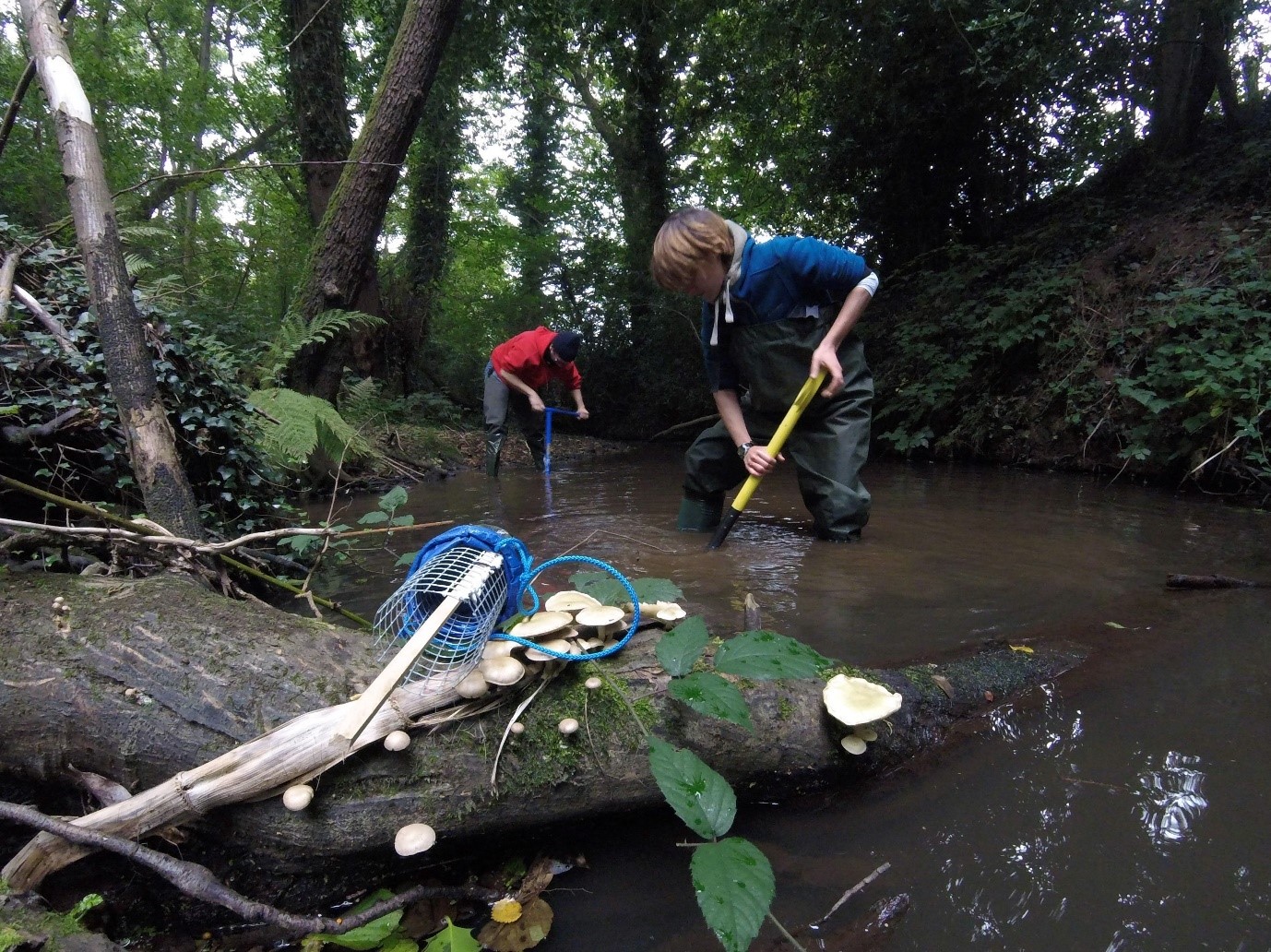Wood in rivers affects invertebrate community traits
11/07/2019

The bed of a river is an important habitat for invertebrates with a diverse range of organisms living within and on the sediment. These invertebrate communities may appear similar at different locations within a river reach, but subtle variations in environmental conditions result in invertebrate species assemblages presenting different characteristics.
For a long time, dead wood has been considered a nuisance in rivers and removed for flood risk, transport, recreation and aesthetic reasons. With changing management practices and new scientific knowledge, wood is beginning to be recognized for its important role driving river processes, both above and below riverbeds, which affect river biodiversity. Yet, how the processes driven by wood affect invertebrate characteristics remains unknown. Functional traits are species characteristics (e.g. body size and form) that reflect adaptation to the surrounding environment, which can provide information on the environmental conditions and pressures to which the species are subjected. To better understand how invertebrates in the bed of rivers respond to wood-induced processes, we explored multiple traits of invertebrates and how they differ at sites where wood is present and absent.
We studied naturally occurring woody debris accumulations in a lowland river in southern England. We sampled invertebrate species living near the surface of the riverbed and deeper in the sediment (see figure). At each sampling site, we also collected environmental information, e.g. sediment type, flow velocity, oxygen and nutrient concentrations, to quantify the variation of traits as a function of environmental variables representing important attributes of wood.
We found that very small invertebrates living more deeply within the sediment had different biological (i.e. aquatic stages, reproduction), physiological (i.e. dispersal, feeding habits) and behavioural (i.e. substrate preferences) traits when found near wood, but the traits of bigger invertebrate living near the riverbed surface did not differ. In the presence of wood, the small invertebrates living below the riverbed were characterized by functional traits that were related to the physical and sedimentological processes occurring around wood (e.g. sediment scour and sorting). The results suggest that wood creates a more dynamic environment with greater variations in local abiotic conditions, resulting in species traits that relate to adaptation to temporal disturbance and spatial refugia. Consequently, the wider ecological effect of wood should be considered when planning river restoration and management solutions.
We found that very small invertebrates living more deeply within the sediment had different biological (i.e. aquatic stages, reproduction), physiological (i.e. dispersal, feeding habits) and behavioural (i.e. substrate preferences) traits when found near wood, but the traits of bigger invertebrate living near the riverbed surface did not differ. In the presence of wood, the small invertebrates living below the riverbed were characterized by functional traits that were related to the physical and sedimentological processes occurring around wood (e.g. sediment scour and sorting). The results suggest that wood creates a more dynamic environment with greater variations in local abiotic conditions, resulting in species traits that relate to adaptation to temporal disturbance and spatial refugia. Consequently, the wider ecological effect of wood should be considered when planning river restoration and management solutions.
For further information read the publication: https://besjournals.onlinelibrary.wiley.com/doi/full/10.1111/1365-2435.13381
Categories & Tags:
Leave a comment on this post:
You might also like…
Preparing for assignments and exams?
Sorry! We know it seems a bit mean to mention the exams in January rather than looking forward to the break before it! However, we know many of you will be thinking about your forthcoming ...
Screening for FTSE 100 companies on Bloomberg
So you’re researching an index and need some data on its constituent companies? Bloomberg’s Equity Screening tool makes light work of this, not just for the FTSE, but for indices, exchanges and sectors worldwide. Type EQS ...
Accelerating my future: How Cranfield put me on the fast track to automotive safety innovation
Hello! I’m Michaela Kaiser, and I’m thrilled to share my journey studying abroad. I’m from Calgary, Canada, and I recently graduated from Cranfield’s MSc Automotive Engineering course. My path to Cranfield ...
From Myanmar to Cranfield: My path to Renewable Energy
As someone who is passionate about sustainability, my career goal is to build a path in the renewable energy sector. My aspirations comes from the benefits of developing sustainable energy sources and ensuring energy ...
From lifelong dream to circular economy leader: Q&A with Himesha Randeni on the Environmental Management for Business MSc
What does it take to turn a lifelong passion for the planet into a fulfilling and impactful career? For Himesha Randeni, the answer was the Environmental Management for Business MSc at ...
Library services over the Christmas period
Kings Norton Library will be open 24/7 throughout the holiday period as a study space. Library staff will work until 6pm on Friday 19 December and will resume their normal working hours from 9am on ...






